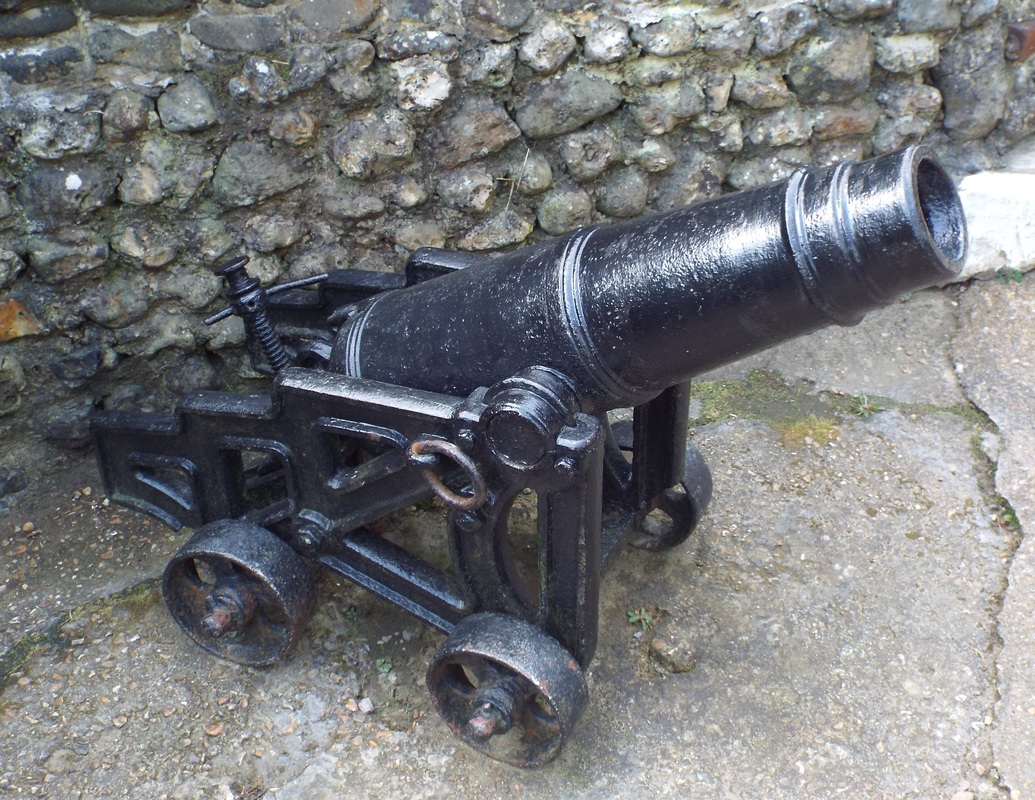This is a very small 6 pounder version of a weapon widely used during the 18th and 19th Centuries.
This particular 6 Pounder dates to approximately 1800, has a barrel length of 43 inches and is bored to take a 6 lb (3.6 inch) ball, the mounting is an iron garrison carriage which gives the gun an overall length of 50 inches and a total weight of 6cwt 13lbs.
The name carronade is attributed to the Carron Company of Falkirk, Scotland who produced these types of weapons from 1776. Initially the weapons were known as Marine Guns and those produced were sold to chiefly British and Spanish merchants who had to arm their own vessels, the guns were lighter than 'long' guns which was important to merchant vessels who at the time had to deal with privateers and American Naval vessels prowling off the British Isles.
This 'Marine' gun was in effect a prototype of the Carronade, the first carronades were installed on a ship called Spitfire which was of 200t and at the time fitting out in Liverpool. Spitfire was soon in action and reportedly did very well despite heavy odds.
The new weapon was also in demand by privateers sailing against vessels from America, the Captain of the Sharp of Glasgow attributed a victory in an engagement off Cape Clear to the new gun as did the Hawke (also from Glasgow) which fought off two privateers in the Bay of Biscay in July 1779.
The carronade had appeal because it offered a large calibre for relatively little size and weight, a 42 pounder carronade was shorter than a 3 pounder long gun and weighed less than a 12 pounder. Another advantage was a carronade took less men to operate, the normal crew for a 24 pounder long gun was 11men whilst a 42 pounder carronade could be operated by a crew of 4. The carronade was also easier and quicker to load and fire with 11 broadsides to an enemies 3 reported. Its main disadvantage was that it did not have the range of the long guns which ultimately proved a serious problem if a carronade armed vessels could not close the distance with a long gun armed opponent, in effect they could not effectively fire back, another disadvantage was excessive recoil particularly when the gun was double shotted which could also result in the dismounting of the gun from its carriage.
The guns were introduced into British naval service in 1779 and were produced in sizes up to 68 pounder, by January 1781 429 Royal Navy ships mounted 604 carronades
The last Carronade was manufactured in 1852 although they had started to be replaced by the Royal Navy well before this.

 RSS Feed
RSS Feed
